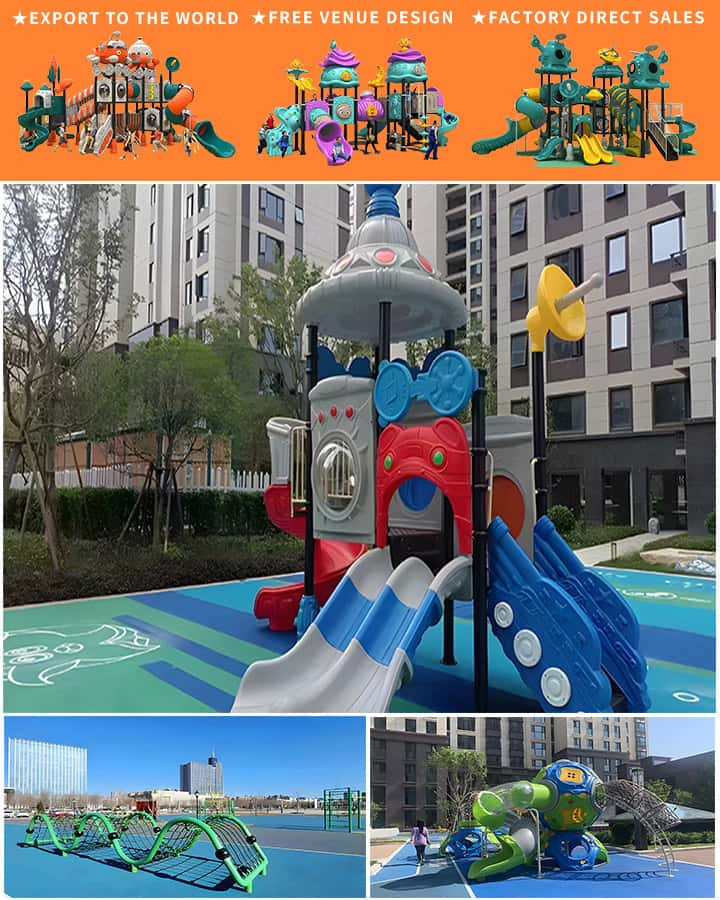Outdoor playgrounds are essential spaces where children can engage in physical activities, socialize, and develop crucial motor skills. One of the most critical considerations when designing or upgrading an outdoor playground is the choice of flooring. The right playground flooring not only enhances safety but also contributes to the overall enjoyment and durability of the play area. In this article, we will explore various types of outdoor playground flooring options and their benefits.
Safety First: Impact-Absorbing Surfaces
Safety is paramount in any playground setting. Impact-absorbing surfaces like rubber mats, wood chips, and sand provide excellent cushioning to minimize injuries from falls. Rubber mats, in particular, have become increasingly popular due to their durability and effectiveness in reducing impact forces. They are available in different thicknesses and colors, making them both functional and visually appealing. Additionally, they are easy to clean and maintain, ensuring a hygienic play environment.
Eco-Friendly Choices: Natural Ground Coverings

For those looking to create an environmentally friendly playground, natural ground coverings such as grass, mulch, or pea gravel are excellent options. Grass provides a soft, natural surface that is easy on the eyes and skin. Mulch, made from organic materials like wood chips or bark, offers good shock absorption and blends seamlessly with natural surroundings. Pea gravel, while not as soft as other options, still provides a stable and durable surface. However, natural ground coverings require regular maintenance to ensure they remain safe and attractive.
Durability and Low Maintenance: Synthetic Turf
Synthetic turf has gained popularity for its longevity and low maintenance requirements. It mimics the look and feel of natural grass while offering superior durability and weather resistance. Unlike natural grass, synthetic turf does not require watering, mowing, or fertilizing, making it a cost-effective solution in the long run. It also provides consistent performance throughout the year, unaffected by rain or drought conditions. Synthetic turf is ideal for high-traffic areas and can be customized with different colors and patterns to stimulate creativity and learning.
Accessibility and Inclusivity: Pour-in-Place Surfaces
Pour-in-place (PIP) surfaces are specially designed to accommodate children with disabilities. These surfaces are smooth and seamless, allowing for easy wheelchair access and safer movement for all children. PIP surfaces can be customized with vibrant colors and educational designs, creating an inclusive and engaging play environment. Moreover, they offer excellent traction and shock absorption, enhancing safety for all users.
Budget-Friendly Solutions: Asphalt and Concrete
While asphalt and concrete may not offer the same level of safety and comfort as other options, they are highly durable and cost-effective. Asphalt provides a smooth surface that is easy to maintain and repair, making it suitable for multipurpose areas like basketball courts or running tracks. Concrete, on the other hand, is incredibly robust and versatile, able to withstand heavy use and harsh weather conditions. Both materials can be coated with colorful, non-slip finishes to make the playground more inviting and safe.
Conclusion
Choosing the right outdoor playground flooring requires careful consideration of safety, durability, maintenance, and aesthetic appeal. Whether opting for impact-absorbing rubber mats, eco-friendly natural ground coverings, long-lasting synthetic turf, accessible pour-in-place surfaces, or budget-friendly asphalt and concrete, each option has its unique benefits. By selecting the appropriate flooring material, you can create a safer and more enjoyable outdoor playground that encourages physical activity, social interaction, and imaginative play for children of all ages and abilities.




